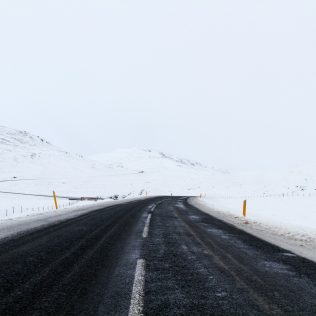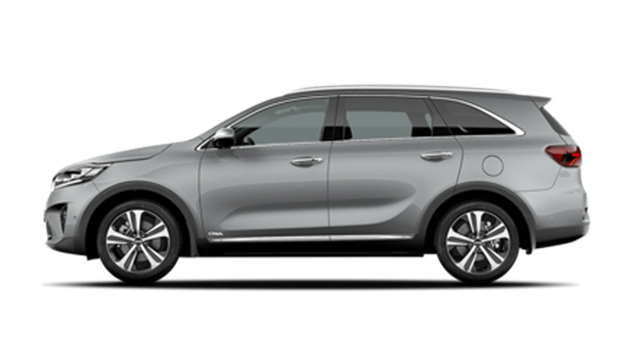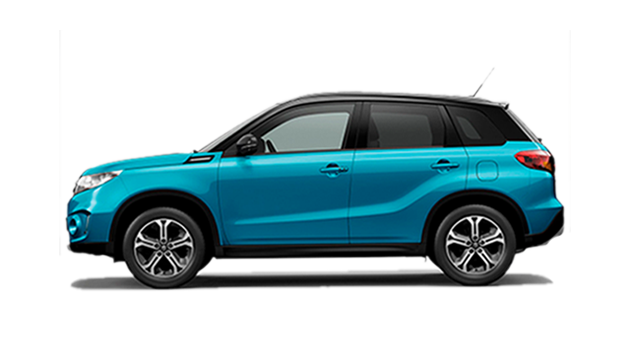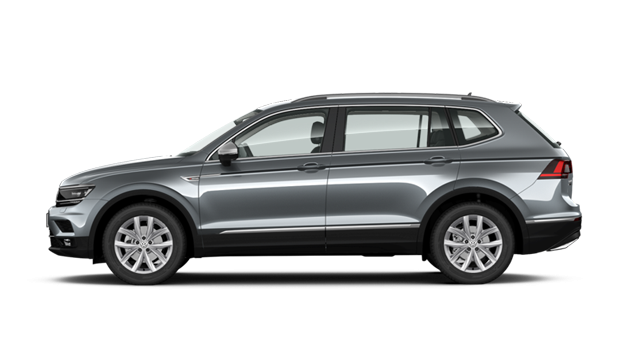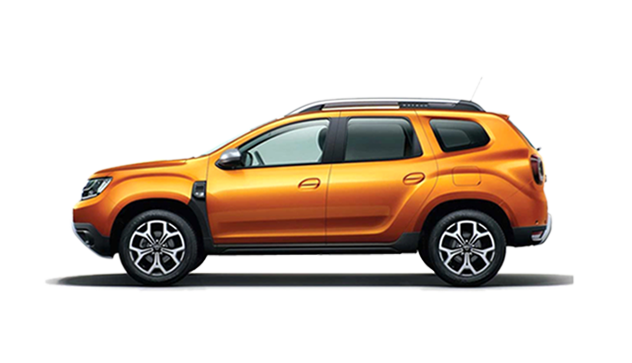Is It Safe to Drive in Iceland in Winter?
There’s nothing like visiting Iceland in winter, but if you’re planning a trip to this frozen wonderland you might be wondering, “Is it safe to drive in Iceland during the winter months?”
The short answer? Yes, but only if you’re well-prepared. This guide is here to help answer all of your burning questions about driving in Iceland in winter, keep you safe on the road, and possibly even help you determine if you should rent a car or opt for a tour instead.
Driving in Iceland in winter isn’t just about getting from A to B , it’s about enjoying the journey. With the right vehicle and a careful plan, you can discover snow-covered waterfalls, catch the northern lights dancing in the sky, and experience quiet moments on the road surrounded by Iceland’s frozen landscapes.
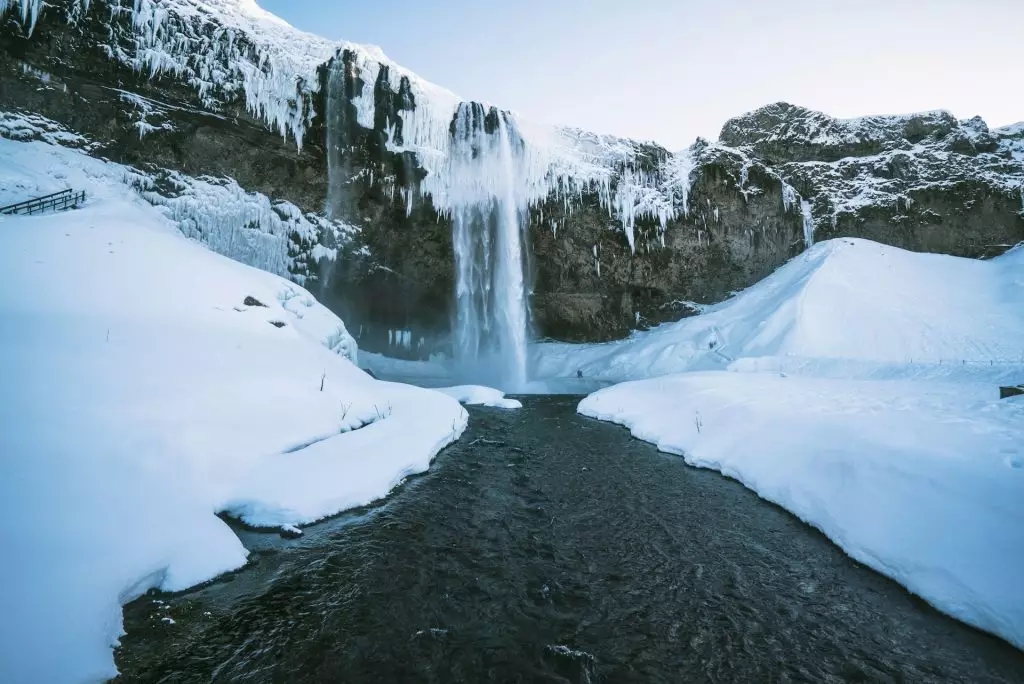
How ‘Bad’ Can It Get? Understanding Icelandic Winter Roads
Tip: Always check the weather forecast and road conditions before heading out.
If Iceland’s winter weather could be described in one word, it would be unpredictable! You might wake up to blue skies and end up in a snowstorm by lunch.
Snowstorms, howling winds, and icy conditions can whip up at any moment, making planning ahead and road travel difficult.
Here are a few of the winter weather conditions you should keep your eyes peeled for…
- Short daylight hours: Less daylight ultimately means less visibility. In the peak of winter, there are only a few hours of daylight a day in Iceland which can make it even trickier to navigate in ice and snow.
- Slippery and Icy Roads: That being said, slippery and icy roads are a major concern. Because weather patterns can change rapidly, road conditions are often unpredictable in Iceland during winter.
- Strong Wind: Iceland is known for its howling winds, especially in winter. This can make driving hazardous, but even more importantly, the wind can be strong enough to rip off car doors if opened incorrectly! Always double check with your car rental provider to see about insurance coverage and how to approach opening car doors during high winds.
- Road Closures: Road closures in the winter months are frequent in Iceland due to snow, ice, and poor visibility. Check the official road conditions website (road.is) to monitor closures live.
- Temperature Fluctuations: Because temperatures often fluctuate rapidly in Iceland (no matter the season!)roads can suddenly be covered in black ice. Always approach roadways with caution and follow signage and speed limits.
Even when the weather seems fine, microclimates in Iceland mean you could face drastically different winter conditions in just a short drive. One mountain pass may be snowed over while the next valley is clear. Preparation is key.
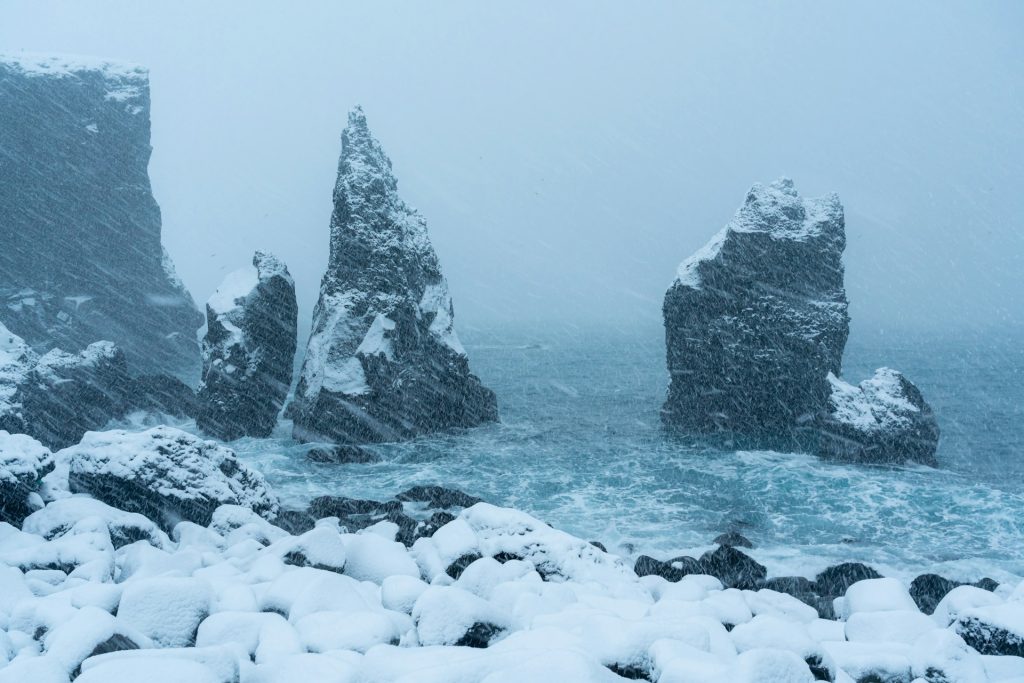
What Are Iceland’s Road Conditions Like in Winter?
During the winter months, the Ring Road (Route 1) and main roads like the Golden Circle route are cleared regularly and generally safe to drive. However, they may still be icy in places.
- The Ring Road: This road loops around the entire island and offers access to many top attractions. It’s open year-round but may still have icy patches and snow buildup.
- Gravel Roads: Many secondary roads are gravel. These are more slippery in winter and not ideal for 2WD vehicles. Slow down and drive with caution.
- F-Roads: These are completely closed in winter. They lead into the Highlands and are only accessible in summer with a 4×4.
- Mountain Passes: Especially in the North and East, these can become impassable during storms. Avoid unless necessary.
Keep in mind that even paved roads can be uneven or worn, especially in rural areas. Drive slowly, especially when transitioning from gravel to paved surfaces. Always follow local speed limits, which can vary between 80 km/h on gravel and 90 km/h on paved roads.
Where to check conditions?
You can check road conditions on Iceland’s two official websites…
- Road.is – Live updates on road closures and conditions.
- Vedur.is – Iceland’s official weather forecast site.
You can also follow the Icelandic MET Office on social media for real-time updates during your trip.
Is It Safe to Drive in Iceland in Winter?
Driving in Iceland in the winter is safe — as long as you’re well-prepared! If not, conditions can be dangerous.
Only experienced drivers should take on the winter roads in Iceland and should have prior knowledge of navigating icy roads and bad weather.
If a storm is forecasted, avoid driving at all costs, especially if you don’t have any winter driving experience.
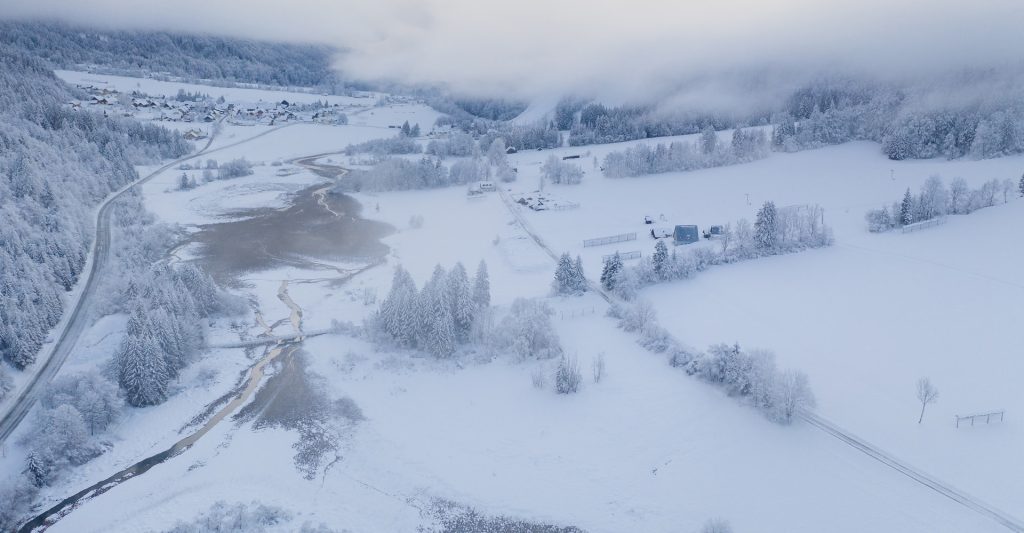
Winter Driving Survival Tips
You’ll want to keep a few important facts in mind when driving in Iceland in the winter.
- Drive slowly and keep extra distance in case of patches of ice.
- Avoid sudden braking or sharp turns.
- Check the Icelandic weather and road updates daily.
- Never open car doors against the wind.
- Keep emergency essentials in the car (blanket, snacks, flashlight).
Best Cheap but Robust Rental Cars for Icelandic Winter Roads
Choosing the right rental car is key for staying safe. Firefly Iceland offers budget-friendly, reliable options. Here’s a breakdown of the model of vehicles you can expect.
Best Budget Cars for Winter:
- Dacia Duster 4×4: Affordable, fuel-efficient, perfect for icy roads. The Duster is a favorite among winter travelers thanks to its sturdy build, high ground clearance, and excellent fuel economy. It handles slippery roads and light snow with ease, making it ideal for driving on the Ring Road or to ice cave meeting points.
- Suzuki Vitara 4×4: A compact SUV that offers both comfort and capability. The Vitara is well-suited for Icelandic winter conditions thanks to its balanced handling, good ground clearance, and all-wheel drive system. It’s an excellent option for solo travelers or couples looking to explore popular winter routes like the Golden Circle or South Coast, while still being fuel-efficient and easy to park in tighter areas.
- Kia Sorento 4×4: More space, great for families or groups. The Kia Sorento is a mid-size SUV that offers extra cargo room, advanced safety features, and all-wheel drive—making it an excellent companion for longer road trips in Iceland’s winter months. With its comfortable interior, heated seats, and strong performance in snowy or icy conditions, it’s ideal for exploring regions like the South Coast, Snæfellsnes Peninsula, or even venturing farther east when weather allows.
Why Choose a 4×4 in Winter?
- Better traction on ice and snow.
- Required for most rural roads.
- Safer for unexpected bad weather.
If you’re planning an Iceland winter road trip, make sure you include rental car insurance that covers wind damage, gravel, and ice-related incidents.
Why choose Firefly?
- Budget-friendly older models in good condition
- Unlimited mileage
- Easy pick-up inside KEF International Airport
- Transparent rental car insurance options
Not all car rental companies in Iceland offer the same level of winter readiness. Firefly equips vehicles with studded winter tyres and provides helpful driving advice. It’s also worth checking if your rental includes a reflective safety vest, warning triangle, and ice scraper — essentials for safe winter travel.
How to Drive Safely on Iceland’s Winter Roads
Before You Drive:
Before you head out on Iceland’s winter roads, always be sure to check the weather and road conditions. You’ll want to rent a 4×4 vehicle for added stability and assurance. Drivers should also plan on shorter drive times as there are fewer daylight hours and visibility decreases drastically as darkness falls.
While Driving:
Once you’re on the road, go slow and steady. One benefit of driving in Iceland is that there aren’t many other drivers out on the roads — especially in the off season! You’ll also want to beware of strong winds and check wind speeds before heading out.
In Case of Emergency:
- Keep a warm blanket, flashlight, snacks, and water in the car
- Call 112 in case of emergency
Don’t forget that winter driving also means adapting your schedule. Plan for more rest stops and build in extra travel time each day. Try not to drive more than 4–5 hours a day during the darkest winter months.
Always be sure to follow local driving rules as well! Iceland requires that drivers have headlights on at all times and off-road driving is illegal.

Best Winter Road Trip Routes in Iceland
Some areas are safer than others for a winter Iceland road trip:
Safer Routes (Well-Maintained, Year-Round Access)
- Golden Circle: The Golden Circle is the closest road trip option to Reykjavik. Roads here are well-paved, regularly maintained, relatively safe, and easily navigable. Main attractions includes Geysir geothermal area, Gullfoss waterfall, and Þingvellir National Park.
- South Coast (to Vík or Jökulsárlón Glacier Lagoon): Roads leading to Iceland’s South Coast (mainly the Ring Road, otherwise known as Route 1) are weather-dependent. This road trip is stunning but you’ll need to check conditions well in advance.
- Snæfellsnes Peninsula: Also relatively close to Reykjavik, the Snæfellsness Peninsula offers beautiful landscapes, but it can be windy. Keep this in mind when opening car doors and planning to explore on foot!
High-Risk Areas (Best Avoided in Winter)
- F-Roads & Highlands: All F-Roads, which lead to Iceland’s interior or Highlands, are fully closed in the winter.
- Westfjords: Roads in the Westfjords region are remote and icy with a high chance of being snowed in. You’ll likely want to avoid this more rugged area altogether.
- North Iceland in Extreme Conditions: Northern Iceland, including the Akureyri area, can see heavy snowfall at times. This is another destination where you’ll want to check the weather well in advance.
Some travelers consider a partial Ring Road journey in the winter months, focusing on the southern and western parts of the country. This gives you the chance to enjoy the scenic routes without the riskier eastern and northern segments.
Popular Winter Activities (and How to Drive to Them)
- Chasing the Northern Lights: Having your own rental car in Iceland lets you escape city lights. Drive out of Reykjavik or Akureyri for better aurora visibility.
- Visiting Ice Caves: Most ice caves are accessible via guided tours from Vík or Jökulsárlón. You’ll still need to drive there. Check conditions — tours can cancel in bad weather.
- Geothermal Spas and Hot Springs: Easy to reach by car — like the Blue Lagoon near KEF or the Secret Lagoon near the Golden Circle.
You can also visit smaller natural hot springs and lagoons around the country if road conditions allow. These stops are perfect for warming up after a long day of cold-weather driving.
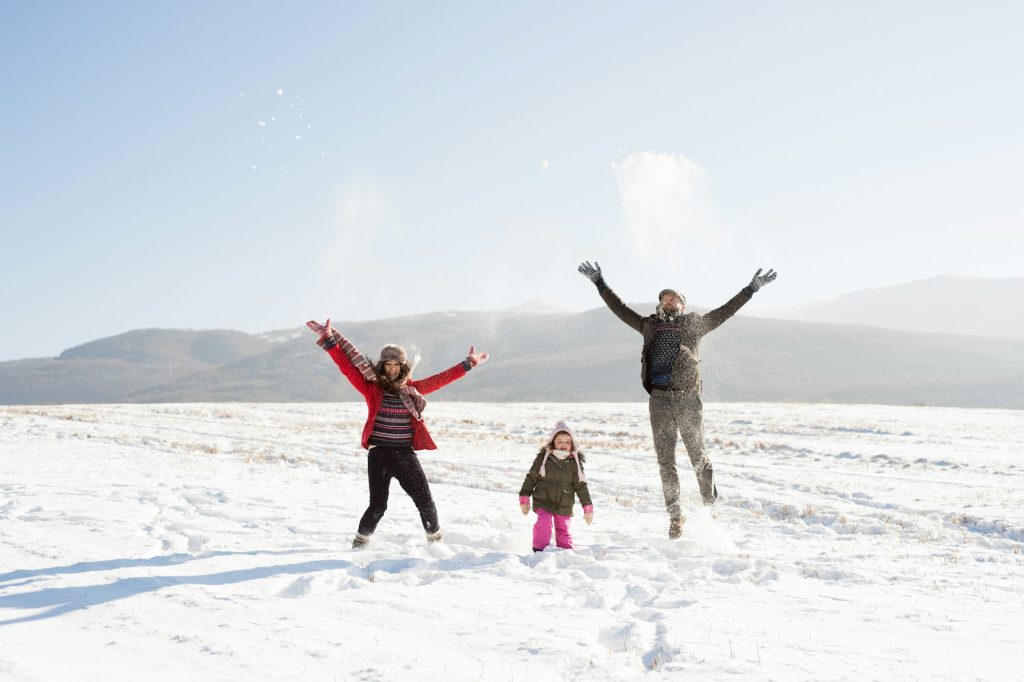
Is Driving Worth It in Winter? Or Should You Join a Tour?
Self-Driving Pros
- Those who are comfortable driving in winter conditions and have experience with snow and ice will have the freedom and flexibility to explore at their own pace.
- Renting your own set of wheels is often less expensive than guided tours — especially if you’re with a group.
- Self-driving is one of the best ways to see the Northern Lights as you’ll be able to escape from the city light pollution at a moment’s notice.
Tour Pros:
- For travelers who opt for a tour, you won’t have to stress about road conditions ahead of time.
- You’ll have experienced guides to lead the way who know all about Iceland’s weather and road safety.
- This option is ideal if the thought of driving through snow and ice makes you feel uncomfortable.
Firefly Iceland Tip: If you’re a confident driver and well-prepared, a winter road trip can be an amazing experience. If you’re unsure, consider a mix of self-driving and tours for the safest option.
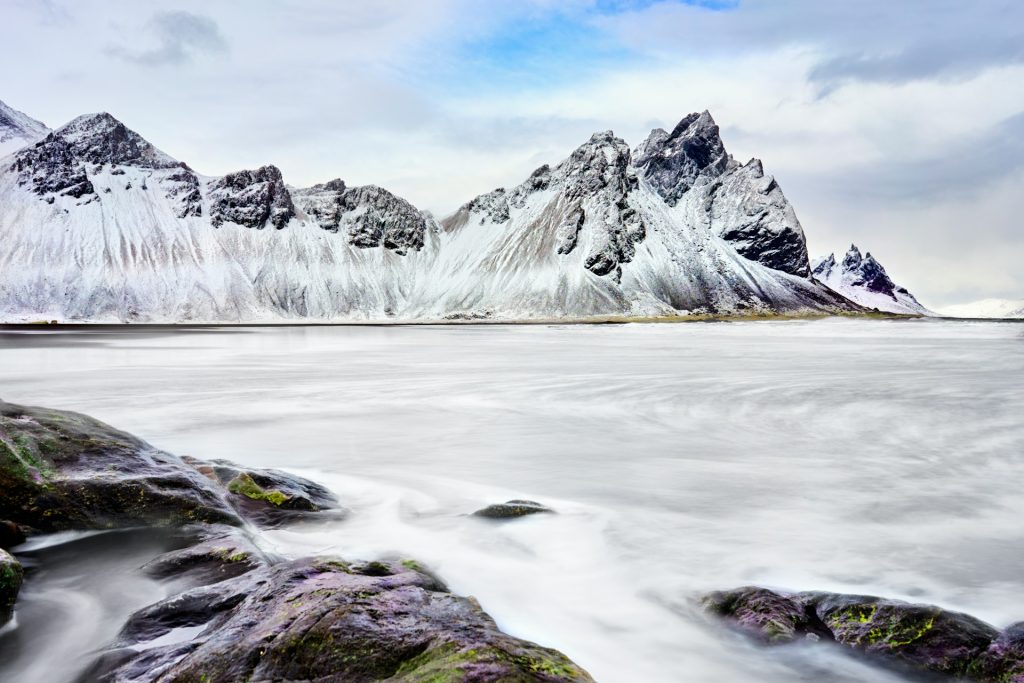
Final Thoughts: Should You Drive in Iceland in Winter?
Visiting Iceland in the winter months is a once-in-a-lifetime experience! Seeing the country’s already dramatic landscapes shrouded in snow and ice …
While driving in Icelandic winter is challenging, it’s still very much possible with the right preparation.
If you do choose to drive, be sure to rent a 4×4 vehicle from Firefly Iceland for safety, reliability, and cost savings!
Don’t forget to check the weather forecast and road conditions ahead of time, too.
- Driving in Icelandic winter is challenging but possible with the right preparation.
- If you choose to drive, rent a 4×4 from Firefly Iceland for safety and reliability.
- Always check the weather forecast and road conditions before heading out.
Ready to explore? Rent a cheap but robust winter rental car from Firefly Iceland and start your winter adventure!
Conclusion
Driving in Iceland in the winter is absolutely possible — and even enjoyable — with the right prep. If you’re confident behind the wheel and ready for an adventure, it’s one of the best ways to explore Iceland off the beaten path.
Ready to start your winter road trip?
Book a cheap but reliable 4×4 rental car from Firefly Iceland. We offer:
- Winter-ready cars with studded tyres
- Affordable rental prices
- Pick-up from KEF International Airport
- Helpful local tips from a trusted car rental company
Plan ahead. Drive safe. Explore Iceland in winter — your way.
And remember: with a bit of caution, flexibility, and the right car, driving in Iceland in winter can be one of the most unforgettable travel experiences you’ll ever have.
At the end of the day, driving around Iceland in winter isn’t for everyone but it might be the perfect solution for your trip!
If you think you’re up to the challenge of a winter driving adventure in Iceland, rent your car with Firefly Iceland for the best deals on 4×4 vehicles.
